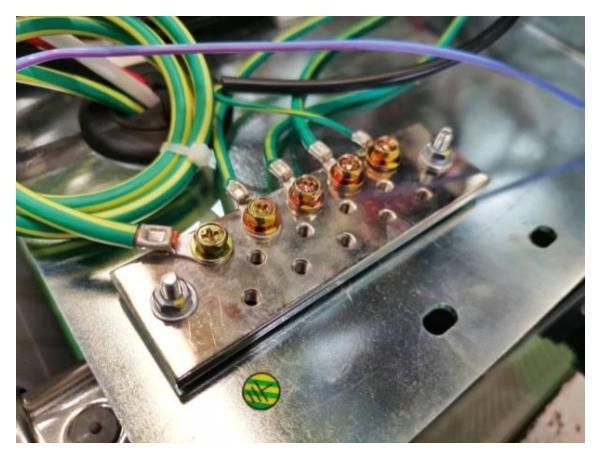How Do I Fix a Noisy Ceiling Fan?
A great way to cool off a room is by turning on a ceiling fan. Homeowners save countless dollars by using wind chill instead of air conditioning on hot days. However, a noisy ceiling fan is an incredible frustration. Get to know how anyone can fix these fans with only a bit of elbow grease. The results are a long-lasting fan for years to come.
1. Clean Off the Blades
The simplest way to calm a noisy ceiling fan is by cleaning the blades. Some fans sit idle for many months. Dust and grease accumulate on the blades’ surfaces. They become unbalanced as a result.
Carefully wipe down each blade with a damp rag. Clean the blade mounts too. The noise may abate with just a simple cleaning. After you clean the blades, Test them afterward to see if this made a difference. Those ceiling fan blades can hold quite a bit of dust.
2. Tighten the Blade Screws
All ceiling fan blades will be connected to a mount on the assembly. They typically have a decorative appearance, but they’re more functional than residents might realize. Because of the blades’ rotational speed, the screws within the mounts can loosen over time.
Take a look at these screws. Tighten them as necessary. In many cases, a noisy ceiling fan can be resolved with this step. Residents may want to perform this task regularly so that noisy conditions aren’t a regular occurrence.
3. Tighten Light-Fixture Fasteners
Many ceiling fans come with light fixtures. It makes sense to combine these features into one appliance. The globe or cover on the fixture, however, might loosen.
Access the cover and check the fasteners. Take this opportunity to remove the cover. Wash it, and check on the bulb still attached to the fan. Replace the bulb if necessary.
Reattach the cover while carefully tightening the fasteners. The fan should operate without any noise now.
4. Examine Any Warped Blades
All of the blades on the fan should have about the same shape and orientation. This troubleshooting tip requires a keen eye for warps at the ceiling level.
Use a ladder to access the fan’s blades. Look at the blades’ profiles as a resident manually turns them. No blades should look higher or lower than the next ones.
Bend any blades into the shape that aren’t matching the others. In some cases, residents may need to replace one or two blades to achieve a balanced look.
5. Secure the Upper Canopy
If residents take a close look at their ceiling fans, there’s an upper canopy that covers the transition point into the ceiling. Although it’s tightly adhered to the fan’s post, the canopy can loosen over time.
Tighten the fasteners or screw the canopy back into place. Its design depends on the manufacturer. Residents may want to use a locking liquid on the fasteners so that the canopy doesn’t loosen frequently. It will take a trip up the ladder to access this ceiling fan part.
6. Lubricate the Fan Motor
Fan motors use lubrication as a way to reduce friction during operations. A buzzing sound often occurs if lubrication is lacking, however. Access the motor if a noisy ceiling fan is an issue. Verify if there’s any lubrication left within the motor.
Add several drops of oil into the motor if it’s dry. The fan’s instruction manual can guide your way.
If the buzzing sound continues after successful lubrication, the motor may be breaking down. An electrician can help residents make that determination.
7. Balance the Blades
When residents have cleaned and checked their blades for warping, another issue might be balance. Some ceiling fans are poorly constructed, and use different materials for the blades.
Because the blades aren’t balanced, the fan wobbles as it rotates. Residents can buy a balancing kit to fix a noisy ceiling fan. They’re sold online and in stores. Follow the directions to add those weights to individual blades, and they’ll be balanced with little effort.
8. Check the Pull Chain
Some ceiling fans come with a remote control today, but many models still have a pull chain. They are usually installed away from any moving parts, but it can end up causing a noisy ceiling fan.
Observe the pull chain with the fan turned on to high. It shouldn’t strike any parts of the light fixture or blades. If it has a swinging motion, the blades aren’t correctly balanced.
Shorten the chain if the blades are standard. It only has to be long enough for easy access as you walk past it.
9. Tighten the Motor’s Cover
Most ceiling fans have a motor that’s located directly above the moving blades. The issue occurs when the motor cover comes slightly loose from its position. Residents end up with a noisy ceiling fan because the motor’s cover scrapes against the moving blades.
Turn off the fan, and access the motor cover’s fasteners. Tighten them so that the lid lifts away from the blades. Test the fan by turning it on low. Quiet operations should be consistent now.
10. Secure the Junction Box
A noisy ceiling fan can have issues that emanate from an item that’s not even visible. Every fan has a junction box that’s hidden just inside of the ceiling. It holds wires and acts as a middle ground for the fan’s connection point.
Residents must remove the fan’s top mount from the ceiling to reveal the junction box. Check if the box is loose from the ceiling. Tighten all of these connections. Reattach the top mount. In most cases, a simple tightening of these fasteners will stop a clicking sound.
If residents require a new ceiling fan, contacting an electrician is the best way to complete this project.
The electrician can add ceiling fans to a room in little time. Residents might consider multiple fans to cool most of the home. At the end of the project, the entire household is more comfortable on those warm days than ever before.
Call Mister Sparky Electrician OKC at (405) 300-0633. America’s On-Time Electrician in Del City, Edmond, Mustang, Oklahoma City, and Yukon services the Oklahoma City area with a team of licensed electricians. In addition to flickering lights, our electrical services provided by Mister Sparky include electrical outlet/switch repair, ceiling fan installation, lighting installation, electrical wiring repair, landscape lighting installation, and home electrical inspections.
You might also like
Don’t stay left in the dark about what to do.
Call us anytime day or night and experience the Mister Sparky Electrician of Oklahoma City
difference. We’ll get you up and running safely, with expert, same-day service at prices you’ll appreciate.
Call us anytime, day or night! (405) 300-0633
Oklahoma City's On-Time Electrician
801 SE 84th St.
Oklahoma City, OK 73149
License Number: #OK42475
Emergency Services
Emergency Electrical Repairs
Electrical Inspections
Electric Panel Repair
Surge Protection
Electrical Installation & Repair
Outlet & Switch Repair
Ceiling Fan Installation
Electrical Wiring Repair
Smoke Detector Installation
Indoor Lighting Installation
Landscape and Outdoor Lighting Installation
Electric Vehicle Chargers
Electrical Panel Upgrades
Home Backup Generators
Electric Panel Upgrades
Mister Sparky® OKC | Terms & Conditions | Privacy | Accessibility | Site Map





